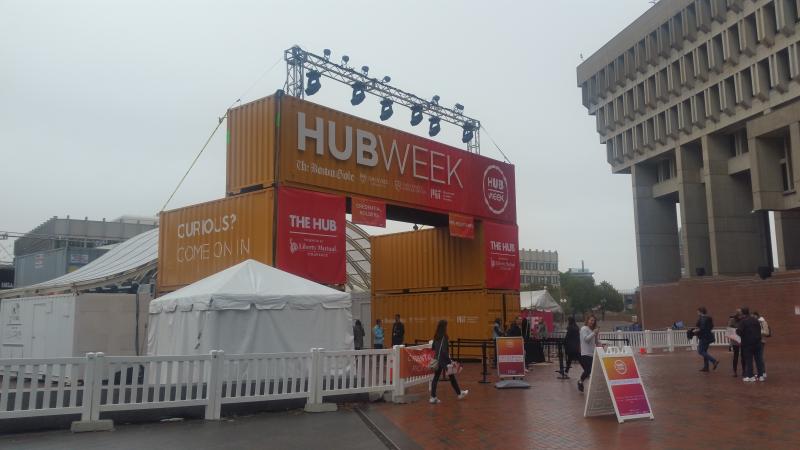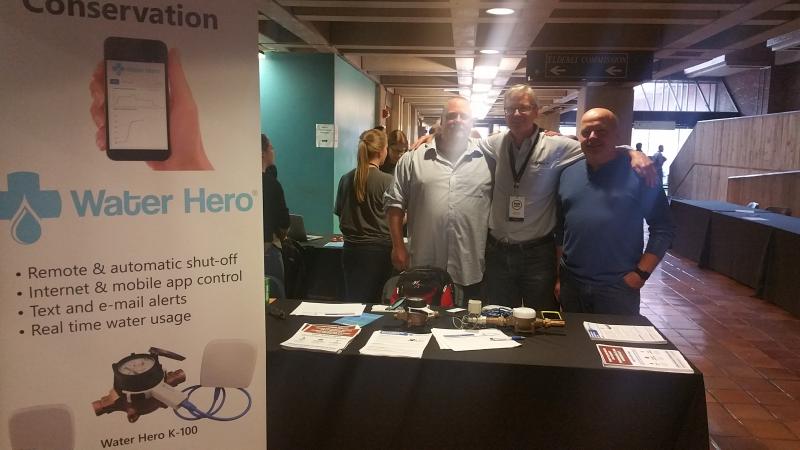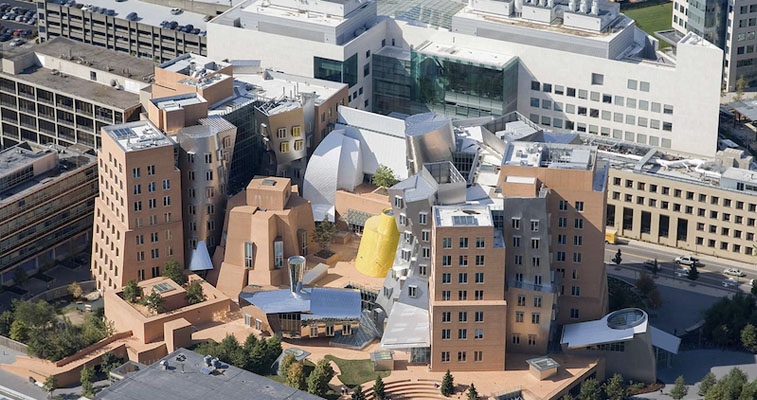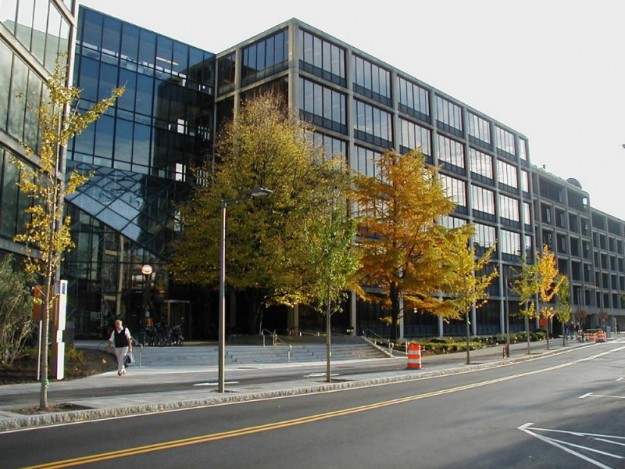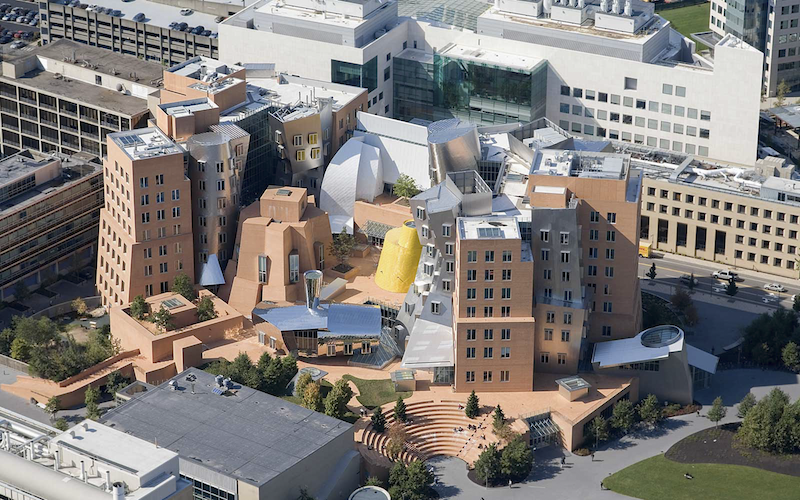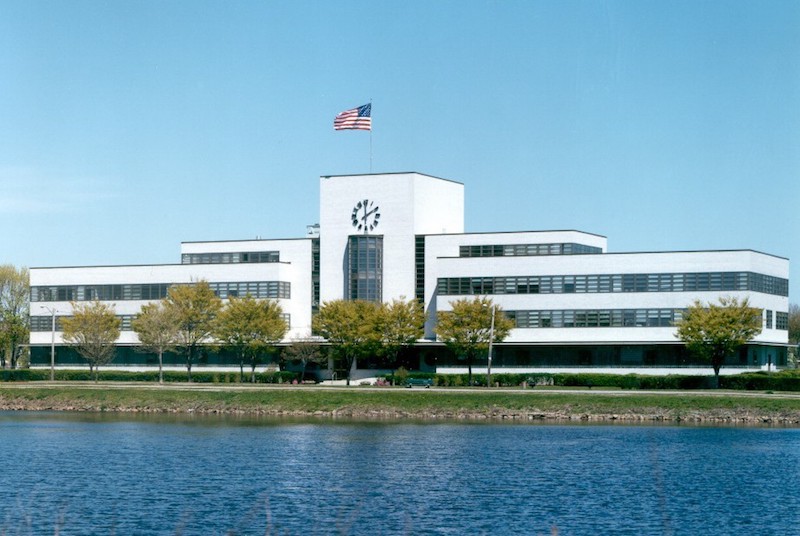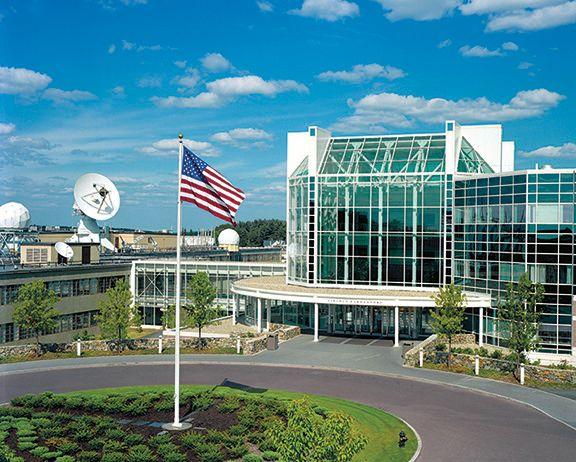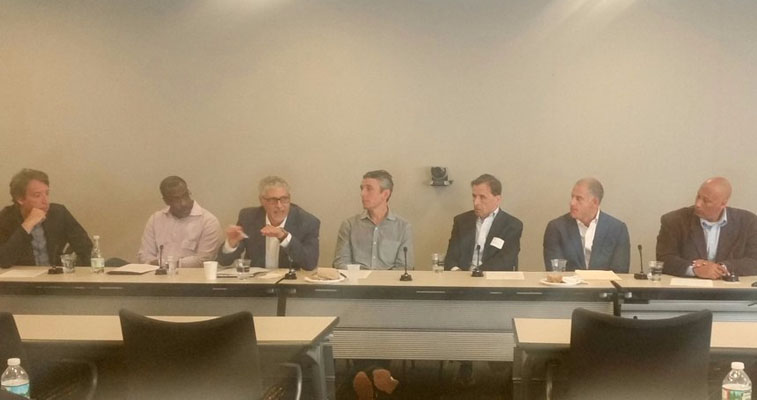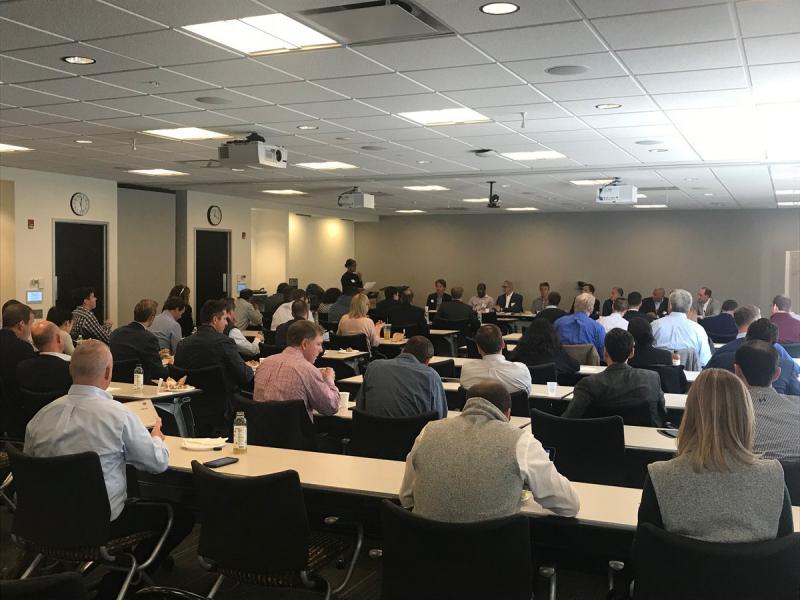I'm a big fan of all things tech and Boston. So in a chocolate meets peanut butter moment, I decided to create my own personal Boston Nerd Tour. For out of towners, this will be an intro to Boston from the geek point of view. For locals, this is a reminder that in addition to living in or near one of the most beautiful cities in the world, your home has been pivotal to the creation of the current tech industry.
Let's get started.
The Telephone (Boston)
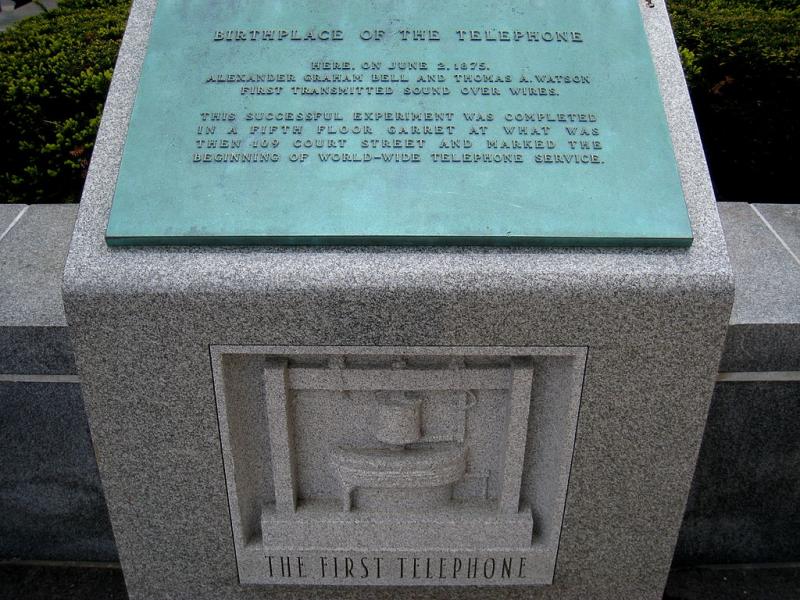
You know the story: Alexander Graham Bell and his assistant Thomas Watson were working in their laboratory in 1876 on a device to transmit sound over wires. Working in separate parts of the laboratory, Bell accidentally spilled acid on himself and urgently used the new device to say: “Mr. Watson, come here, I want you.” Okay, the battery acid may actually have occurred in a separate incident, but it sure makes for a great story. The small plaque in front of the John F. Kennedy Building on Cambridge Street commemorates the first transmission of sound over wires at the laboratory that once stood here. Interesting side note: Bell's future chief engineer was also from Boston, and worked as his patent draftsman in 1876. He was Lewis Latimer, whose parents escaped slavery in Virginia to settle in Boston, and who lived nearby on School Street.
For those under 30, I feel compelled to add the historical note: there was a time long long ago when phones required wires.
1st Venture Win (Boston)

In 1957 when Ken Olsen and Harlan Anderson were seeking funding for the first microcomputer business, the only firm that showed interest was the Boston-based American Research Development Corporation (ARDC). ARDC, the first publicly traded venture capital firm, was founded by George Doriot, who is known as the “father of venture capitalism.” George and ARDC provided Olsen and Anderson $70K, which would be worth $355M after the 1968 IPO of Digital Equipment Corporation (DEC). While ARDC no longer exists, this investment goes down in history as the first big success in venture capitalism. This location was George's house, where the deal was done. Some might say Olsen and Anderson would have had an easier time raising capital if they'd gone to Silicon Valley - but unfortunately, there were no venture firms in SV in 1957.
George Church's Lab (Boston)
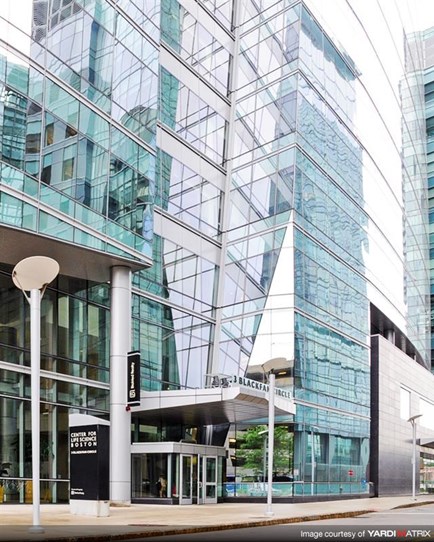
The
Wyss Institute for Biologically Inspired Engineering at Harvard University is home to
George Church, American geneticist, molecular engineer and chemist. Church is known for his professional contributions to the sequencing of genomes, including creating the first direct genomic sequencing method in 1984, co-developing "genome engineering" in 1997, optimizing CRISPR/Cas9, and successfully copying woolly mammoth genes into the genome of an Asian elephant in 2015. Yes, that makes Harvard the only place in the world where you can visit both
a woolly mammoth skeleton and the lab that is inventing technology to one day make the woolly mammoth live again.
Lotus Development Corp (Cambridge)

The office park you are looking at was formerly the worldwide headquarters of Lotus Corporation. Who, you may ask? You know, the maker of Lotus 123, Notes and SmartSuite? Who will you ask again? Okay, I give up. Think of Lotus as the Microsoft of Massachusetts. And if Microsoft had sucked a little more, the company might still be here today.
Lotus was founded in 1981 by
Mitch Kapor and Jonathan Sachs, who wanted to create an application combining the functionality of the popular VisiCalc and VisiPlot (Kapor's 1st company). In its first year selling Lotus 123, the company produced $50M in revenue, rivaling the revenue of the eight-year-old Microsoft. This established Kapor on par with Bill Gates and Steve Jobs as a pioneer of our industry. But by 1986, Kapor moved on from Lotus and the company was never again the same. It was later acquired by IBM.
Entrepreneur Walk of Fame (Cambridge)

In the heart of Kendall Square is the tech equivalent of the Hollywood Walk of Fame. But instead of celebrating movie actors like Danny DeVito, it celebrates tech entrepreneurs. Last time I walked by the Entrepreneur Walk of Fame it had seven stars: Edison, Gates, Hewlett, Packard, Kapor, Swanson and Jobs. While you're here, stop by the MIT Coop to shop for MIT branded clothes and tech books. Confession: you likely will find the Coop more interesting than the Walk of Fame.
MIT Museum (Cambridge)
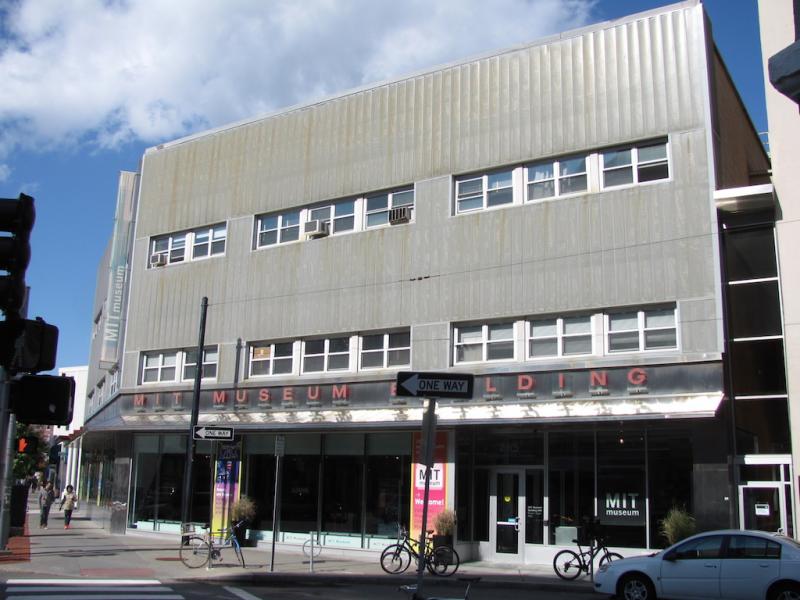
The MIT Museum is a great place to see some of the contributions MIT has brought to our industry. You can see exhibits from MIT's work on advanced radar in World War II, their pioneering work in robotics and artificial intelligence, and even exhibits from the "Steve Jobs of Boston," Edwin Land. My personal favorite though is the LISP Machine. I’m a big fan of any hardware that can make all those parentheses I used in college run faster.
MIT (Cambridge)
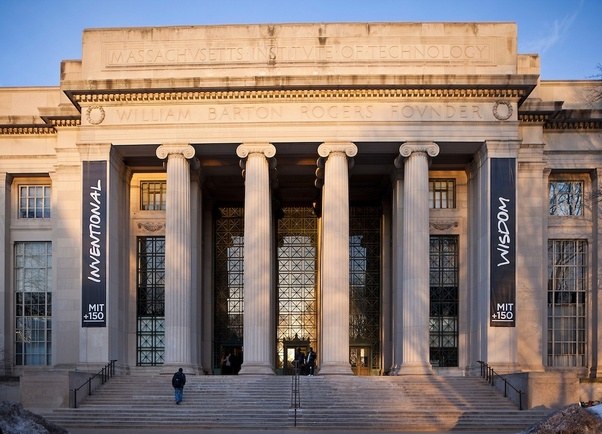
One of the secrets to understanding Boston’s tech history is to realize it is the byproduct of a collaboration between three distinct entities: private industry, higher education, and government. No institution in Boston exemplifies this trinity more than MIT. It was MIT in the early 20th century that pioneered programs to establish links with private industry, and it was MIT that the US government chose as its location for radar research during World War II. MIT is known as one of the top research universities in the US, creating such well-known technologies as GPS, the first computer game, doppler radar, the spreadsheet, the FAX machine, voice recognition, and much much more. There are many sites to see at MIT, but a quick walk up the stairs of the Roger Building and down the Infinite Corridor will give you a flavor for the school. This is also the location at which the South Boston janitor and genius, Matt Damon, became noticed by his therapist Robin Williams. Okay, maybe that was just a movie called Good Will Hunting.
RAD Lab (Cambridge)
In the summer of 1940 with the Battle of Britain raging, Winston Churchill took the dramatic step of sending his country’s most secret scientific breakthroughs to the US. Known as the Tizard Mission, it resulted in the creation of the Radiation Laboratory at MIT (“RAD Lab”), which was at the epicenter of radar and microwave research that some historians credit with winning the war. At its peak, the RAD Lab employed more than 4,000 people and filled over 15 acres of floor space in Cambridge. It also had a positive side effect for Boston: the creation of a rapidly growing and educated tech workforce. MIT building 4 is the location of the original RAD Lab.
1st Video Game (Cambridge)
In 1961 DEC gave MIT a PDP-1 minicomputer, which the school installed in the Kludge Room at the Electrical Engineering Department (current site of the Fairchild Buildings). The next year Steve Russell and friends used the PDP-1 to create Spacewar!, the first computer video game. If you played the arcade game Galaxy (1971) or Atari Asteroids (1979), you were playing a later generation of Spacewar! This game would be the inspiration for the computer gaming industry we know today.
MIT Computer Science and Artificial Intelligence Laboratory (Cambridge)
While Elon Musk is busy worrying artificial intelligence will take over the world, MIT's CSAIL is busy doing research. One the most notable researchers here is none other than Tim Berners-Lee, creator of the World Wide Web. Another notable inmate at CSAIL is Richard Stallman, the open source pioneer, founder of the Free Software Foundation, creator of copyleft, and the person responsible for the open source port of many of our favorite UNIX tools (e.g. emacs, gcc, make). You shouldn't have any trouble finding the CSAIL buildings since they look like they were designed by Salvador Dalí.
Polaroid Building (Cambridge)
One of Steve Job’s idols was an entrepreneur named Edwin Land, who was the most successful creator of consumer products of his time. Land came to Boston in 1927 to attend Harvard, but dropped out to start the company that became known as Polaroid (what is it with entrepreneurs dropping out of Harvard?). Over his career Land created some of the most successful consumer products in the world (e.g. the Polaroid OneStep camera), was awarded over 500 patents, and led a company that by 1978 employed 21K people and generated over $3B in revenue. Cameras from Polaroid were the iPods and iPhones of their era. Unfortunately, Polaroid suffered the fate of many companies in our industry: a technology disruption. This white art-deco building at 748 Memorial Drive is on the National Register of Historic Places. While you are here, you might want to visit one of my favorite non-historical tech locations: Micro Center.
Harvard Computation Laboratory (Cambridge)
In 1946 Harvard began the construction of a new building to house the giant calculator called the Mark I. The building would be called the Harvard Computation Laboratory (replaced later by the Maxwell Dworkin building). The 50 foot long Mark was in use 24 hours a day running computations for the US Navy. It was here the earliest computer scientists of Boston worked, and where the first "bug" report was filed: a moth stuck between relays in the machine. I should note in MIT's defense that while the first computer in Massachusetts was located at Harvard, the digital circuits upon which it was designed came from the 1930s work of MIT graduate student Claude Shannon.
The Harvard Computation Laboratory was also where Chinese born scientist and entrepreneur, An Wang, invented magnetic pulse memory, which would be a standard in computers for the next 20 years. Wang would go on to found Wang Laboratories in 1955, which at its peak in the 1980s employed over 33,000 people and had $3B+ in revenue. Wang went on to become one of the great Boston philanthropists. When the roof of Boston’s Performing Art Center was falling down in the 1980s, Wang made a substantial contribution, and the Wang Center was born.
The Maxwell Dworkin building that now resides on this site was donated by none other than Microsoft co-founders, Bill Gates and Paul Allen.
The Harvard Mark I (Cambridge)

During World War II, the US military struggled to keep up with its demand for rapid mathematical computations. These computations were used in targeting artillery, breaking codes, and even building the first atomic bomb. But long before "computers" were a device, they were a job description for the people who performed the tasks of crunching numbers and verifying their results. But the war caused demand for “computers” to outstrip supply, resulting in the creation of the first modern computers.
he
Harvard Science Center houses part of the original
Harvard Mark I computer. Weighing in at 10K pounds and consisting of over 765K electromechanical components, the Mark I was basically one of the first programmable calculators. This computer went into service in 1944, supporting the US Navy and the Manhattan Project. One of the Mark’s best-known programmers was the famous American computer scientist
Grace Hopper (“Amazing Grace”), who was a pioneer in programming languages. It is with great irony that for an industry with a long way to go in diversity, many of its early pioneers were women, driven by the lack of men in the workforce during the war.
Microsoft Gets Its Start (Cambridge)
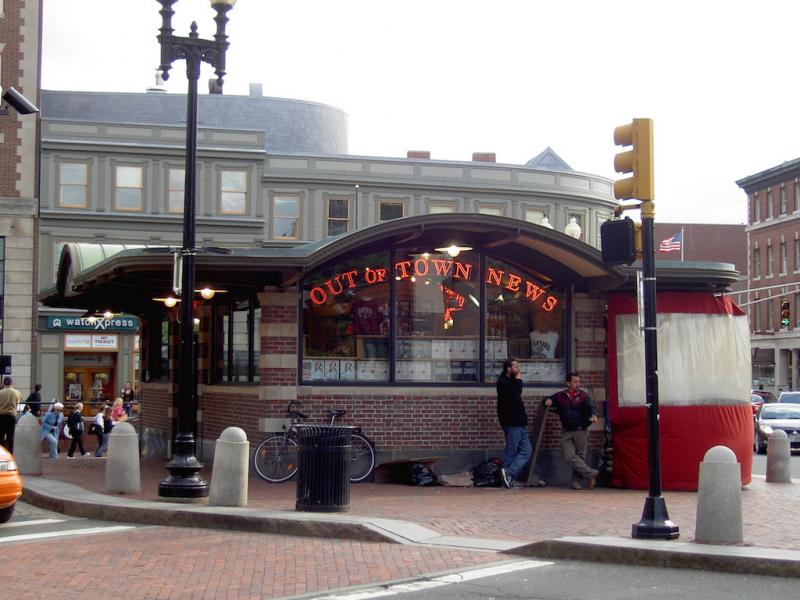
In 1974 a Honeywell programmer named Paul Allen made his way through the snow in Harvard Square to a newsstand called Out Of Town News. He bought a copy of his favorite magazine, Popular Electronics, which had an article on the MITS Altair, the first commercial personal computer kit. Paul immediately rushed over to the Harvard dorm of his high school friend and freshman, Bill Gates, who read the article and began to realize the personal computer revolution was starting. Yes, that freshman was Bill Gates, the co-founder and longtime CEO of Microsoft. And yes like all great entrepreneurs, he dropped out of Harvard.
Zuck Goes West (Cambridge)

Most of us in Boston tech know Henrietta’s Table as a great place for a business lunch. It’s centrally located at the Charles Hotel in Harvard Square, and offers a nice atmosphere for talking business. But Henrietta’s most famous dinner was in 2004 when Mark Zuckerberg and Eduardo Saverin (who?) went to meet a senior associate from Battery Ventures, in one of the last opportunities for a Boston venture capitalist to invest in Facebook before Mark and team headed west. In defense of Battery, Facebook had less than 2K users, no revenue, and Battery had already invested in another pioneering social startup called Friendster. So when you go to Henrietta's Table, make sure to log in to Friendster to post pictures of your visit.
It was years later when Zuck received his honorary Harvard degree that he told Boston he might have been better off had he stayed right here in Massachusetts. Yeah, thanks Zuck!
Harvard Business School (Cambridge)
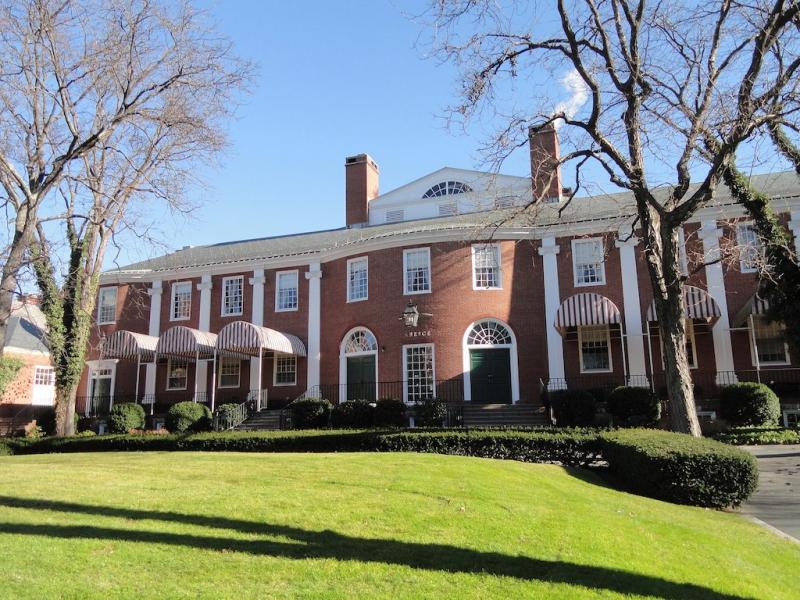
Across the Charles River from Harvard Square is the Harvard Business School, home to the top elite MBA program in the United States. The alumni of HBS have been a catalyst in our industry as executives, entrepreneurs, and investors. But instead of talking about HBS's illustrious alumni, I'd like to talk about one of their many notable faculty members: Clayton Christensen. Christensen's 1997 The Innovator's Dilemma remains one of the top ten must-read tech books in our industry. The book asserts that established market leaders can do everything right and still lose their market leadership due to value networks that influence companies toward sustaining innovation. The landscape of the Greater Boston Area is riddled with case studies of The Innovator's Dilemma: DEC, Wang, Data General, Apollo, Lotus, Polaroid. While the theory has been challenged lately, its truth provides a caution to all technology companies and regions: innovate or die. People who have not raised venture capital may be surprised to learn that whopping 26% of VCs have attended Harvard Business School. But people who have raised venture capital in our industry (e.g. me), are always surprised to learn it's not 100%.
Email & the Internet (Cambridge)
In 1948, MIT professors Leo Beranek and Richard Bolt, and one of their students, Robert Newman, founded BBN Technologies. BBN started as an acoustic consulting firm that was best known for examining the 18.5 missing minutes from the Watergate tapes. But BBN and its founders had another claim to fame: fostering the earliest idea for a computer network that would eventually become the internet. On April 7, 1969, BBN was awarded the federal contract to create the first computer network called ARPANET. The first four nodes of the network were deployed to UCLA and later expanded to the east coast with the addition of a node hosted here in Cambridge in 1970. But BBN didn't stop here: they went on a year later to create email. Yes, that makes BBN wholly responsible for giving Nigerian princes a bad name.
BBN is now a subsidiary of Raytheon.
The VisiCalc Attic (Arlington)
The phrase “killer app” refers to computer software that is so useful consumers feel compelled to buy the hardware just to run the application. Super Mario Brothers was the killer app for the Nintendo Entertainment System game console, and Halo was the same for the XBox. Most people don’t realize the original “killer app” was created here in Boston. Yes in the attic of this Arlington house, Dan Bricklin and Bob Frankston wrote VisiCalc, the first spreadsheet. When VisiCalc arrived on the scene in 1980, it quickly became the most popular application for the Apple II, helping fuel what we today know as the personal computer revolution. So what’s with the attic? Well, a garage may work in the Silicon Valley, but the last place you want to be writing code in a Boston winter is your garage.
The First Internet Service Provider (Brookline)
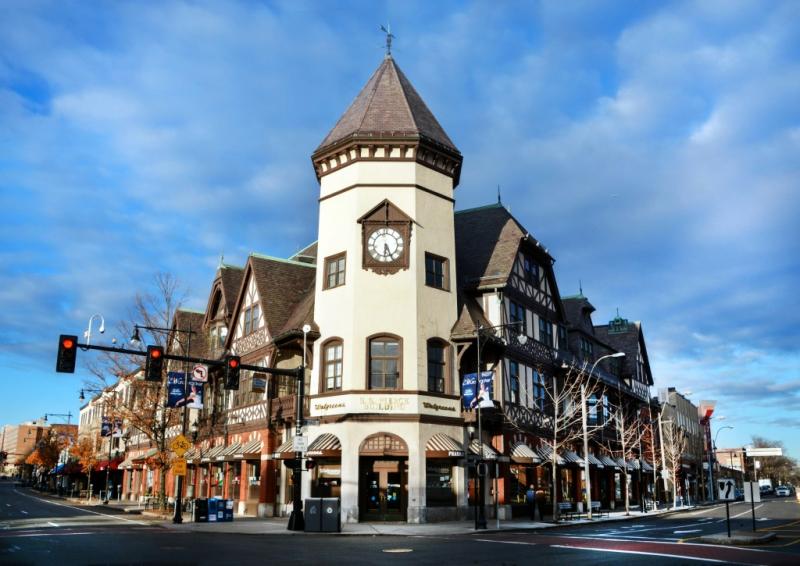
This 19th century Tudor-style building in Coolidge Corner was the location of the first commercial Internet Service Provider (ISP) in the United States. In November 1989, Software Tool & Die launched The World, providing its customers PPP dial-up, email, and access to the Usenet (the Reddit of its time). I still remember using my 14.4K modem to log in to The World back in the early 1990s. It was the place the real nerds gathered, while our cooler but less tech-savvy colleagues used AOL and CompuServe. This 1898 building also has its own history, serving as the second location of a popular grocery store called S.S. Pierce - the Wegmans of its time - whose customers included John Quincy Adams, Oliver Wendell Holmes, and Daniel Webster.
Home of Venture Capital (Waltham)

On the plateau above the Cambridge Reservoir west of Route 128 is a sprawling office park. It’s not much to look at today, but not long ago this was the Sand Hill of Boston. If you were an entrepreneur in the 1980s through the mid-2000s, you likely would have made your way up the steep incline to the numerous buildings that once housed the venture capital industry of Boston. Like its Silicon Valley equivalent, there was a time when every venture firm that mattered was within walking distance of this location. But like the Silicon Valley, times have changed and venture firms have moved into Boston and Cambridge, leaving only the old guard to still call Winter Street their home.
The Microwave Oven (Waltham)

During World War II when the British government was looking to accelerate the production of its microwave-driven magnetron radar, they turned to a small company in Waltham, Massachusetts called Raytheon. This decision turned out to be fortuitous since Raytheon engineers were able to innovate their way to raising production from 100 to 2,000 magnetrons per day. This would propel Raytheon from $3M in revenue to the global corporation it is today, employing over 61,000 people and generating $25B+ in revenue.
But one of Raytheon's greatest inventions came by accident on this site, when in 1946 Raytheon engineer, Perry Spencer, found his work with magnetrons had melted a candy bar in his pocket. He and his colleagues started experimenting, resulting in Spencer creating the first microwave oven. The
filing of a patent would be followed by the creation of a commercial microwave oven, which at 750 pounds and $5K had a long way to go before becoming the mass market appliance it is today. Its first pilot use was at a trolley turnaround stop in Cleveland Circle (near Mary Ann's), where it was used to feed trolley workers with limited time between runs. But you really have to ask: wasn't Spencer worried about more than his candy bar melting?
1st Scrum Team (Burlington)

There is a long forgotten company that resided at 25 Corporate Drive in Burlington called Easel Corporation. While the company no longer exists, it has one historical claim to fame: it was the location of the “the first Scrum team”. While Scrum as we know it was created post-Easel by Jeff Sutherland and Ken Schwaber, it was here the first team started leveraging short iterations, standups, and cross-functional teams. Prior to “the first Scrum team”, software was developed through a serial process known as Waterfall that often took years to complete. Today it is common for companies to push hundreds of changes to their software to production each day using Agile and Scrum. The first standup occurred on the 3rd floor of the main building (on left as you come down Corporate Drive). I know because I was there.
MIT Lincoln Lab & 128
The story of Boston tech cannot be told without mentioning Route 128. Route 128 was the first circumferential highway in the country when it opened in 1951. Derided as the "road to nowhere", its distance from Boston brought it through undeveloped farms and towns. One of the first institutions to embrace Route 128 was the US Air Force, which took over Hanscom Field in 1953, and brought with it federally funded institutions such as the MIT Lincoln Laboratory. Route 128 would be a major catalyst for establishing eastern Massachusetts as a tech center in the US, with its growth so rapid that by 1958 the state had to remove 50 beautifully crafted stone bridges to widen the highway. This type of poor planning and financial waste was later perfected in Massachusetts with the Big Dig.
The Mountain (Framingham)

If you travel west on Route 9, you'll see The Mountain on the right next to exit 12 of the Mass Pike. While it's not much of a hill today, it once stood 364 feet high before being excavated to build the Mass Pike. The Mountain is currently home to the manufacturer of the headset everyone will be wearing on your next flight: Bose. In 1964, MIT graduate student Amar Bose turned his disappointment with the stereo system he purchased into the founding of Bose Corporation. The company today makes high-performance audio devices such as my favorite noise-canceling headphones.
Digital Equipment Corporation (Maynard)

Many people forget that Boston was the original Silicon Valley. In the 1960s and 1970s, Massachusetts was the epicenter of the rapidly growing minicomputer industry. One of the most successful minicomputer companies was Digital Equipment Corporation (DEC), which was the Apple and IBM of its time. At its peak in 1987, DEC employed over 140,000 people, has brought to market products such as the PDP, VAX, Alpha, and DECnet. This location at Mill & Main is the old wool factory that was the original DEC headquarters from 1957 to 1992. The founders of DEC, Ken Olsen and Harlan Anderson, leveraged their experience at Lincoln Labs to conceive of an interactive computer system that eventually became the PDP. In addition to DEC, Massachusetts would be home to other notable minicomputer manufacturers, including Wang, Data General, and Prime Computer.
EMC (Hopkinton)
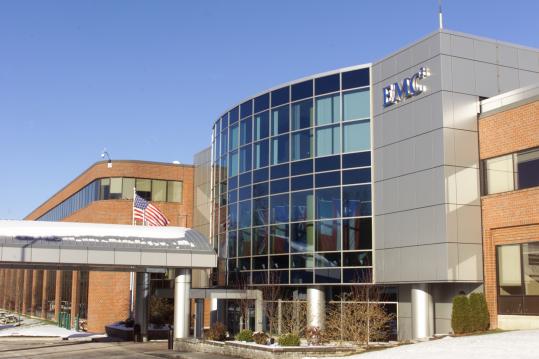
In 1979 two former Northeastern University roommates, Richard Egan and John Curly, founded EMC. Lacking a clear plan, they sold office furniture before eventually settling on reselling Intel products. On a customer suggestion, they built their first product: Prime microcomputer compatible memory. Thus started one of the fastest growing companies in Massachusetts. By 1986 EMC went public, by 2014 they were driving $24B+ in revenue, and by 2016 they merged with Dell to become Dell EMC. One of EMC's great contributions was acquiring and growing VMware, which until Amazon AWS was one of the biggest infrastructure companies in the world. But perhaps their most important contribution to Boston tech is the Dell EMC Club seating at Fenway Park, whose rare invites I never turn down (hint, hint).
The Massachusetts Miracle (Lowell)
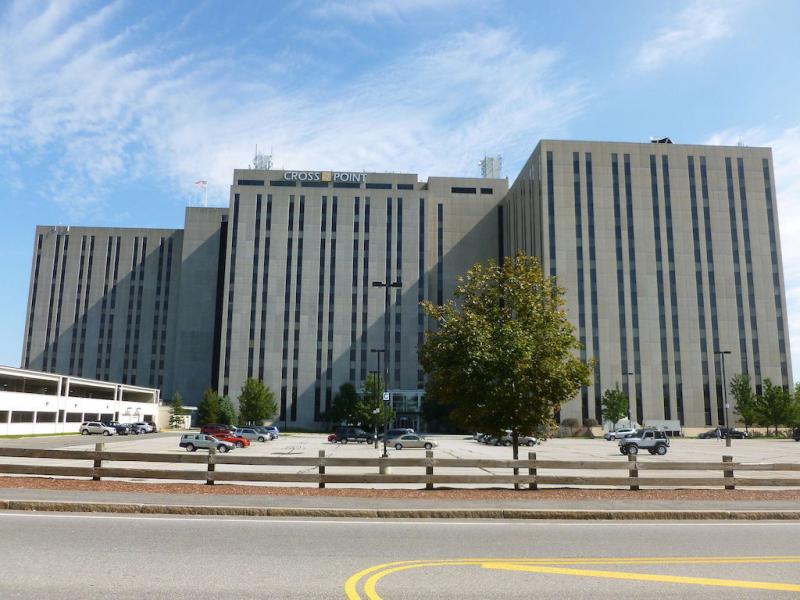
This building at One Industrial Drive was the headquarters of Wang Laboratories from 1976 to 1997. While Wang Laboratories started in Cambridge and later moved it to Tewskbury, it was in Lowell where the company achieved its greatest heights. Selling everything from typesetters to programmable calculators to word processors, its entry into the minicomputer market propelled Wang to be a global technology leader. From 1979 to 1984, Wang grew an average of 61% YoY, making the company one of the best examples of the economic growth in the 1980s known as the "Massachusetts Miracle". At its peak, Wang Laboratories had annual revenues of $3 billion and employed over 33,000 people. But the transition of leadership to An Wang's son and the inability to respond to the microcomputer revolution resulted in the company faltering and eventually filing for bankruptcy protection in 1992. The remaining vestiges of Wang now reside in Getronics and Kodak.
Goddard Rocket Launch (Auburn)

At a golf course in Auburn Massachusetts, you'll find two markers commemorating Robert Goddard's launch of the first liquid-fueled rocket in 1926. The 10-foot tall rocket went 41 feet in the air, making Goddard the father of modern rocketry. In spite of his revolutionary work, he, unfortunately, received little attention until after his death. Shortly after reaching its peak altitude, Goddard's rocket slowly lowered itself back onto its launch platform. No, just kidding on the last part - that would have to wait for Elon Musk.
Odd fact: The original location of the Johnson Space Center was Boston before Kennedy's death brought the Texan Lyndon Johnson to office. That would have made for this phrase in Apollo 13: "Boston, we have a problem."
1st Wireless Transatlantic Transmission (South Wellfleet)
Tucked in one of the most beautiful areas of Massachusetts in the Cape Cod National Seashore is a display commemorating the location of the first wireless transatlantic transmission in 1902. The transmission came from an antenna array erected on top four 210 foot towers that once stood near this site. Its most notable use came 10 years after construction when it alerted the British Navy to the sinking of the Titanic. We should, however, assign no blame to this station for the creation of the 1997 James Cameron movie Titanic.
https://www.google.com/maps/d/u/0/viewer?mid=1S2RDzDIUH1nSr_JNAgZg-9RQi9U&ll=42.26530375551343%2C-70.89263999999997&z=9
Joe Kinsella is the CTO & Founder of CloudHealth Technologies. You can find this post, as well as additional content on his blog called High Tech in the Hub. You can also follow Joe on Twitter (@joekinsella) by clicking here.




